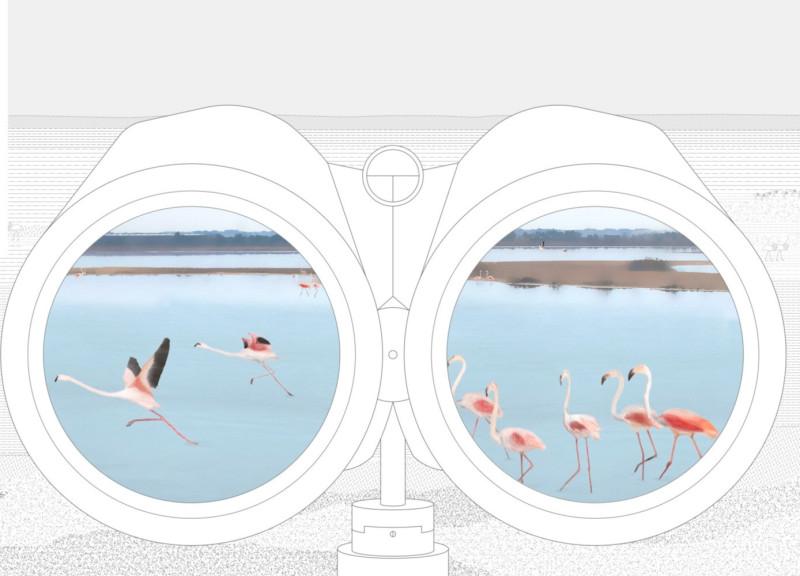5 key facts about this project
The architecture consists of a 350-meter-long pathway crafted from light-colored concrete, which blends with the landscape. The design features strategically placed viewpoints that allow for unobstructed views of the surrounding ecosystems. The primary intent is to foster an immersive experience without hindering the natural habitat, effectively balancing human interaction with wildlife preservation. Unique to this project are the observation stations equipped with binoculars, enabling an educational experience for visitors while keeping a respectful distance from sensitive wildlife areas.
Innovative Material Choices and Construction Techniques
A distinguishing aspect of the project involves the use of multiple materials that serve specific functions. Light-colored concrete is the primary component, selected for its durability and aesthetic compatibility with the environment. The pathway structure is reinforced with a steel framework, facilitating modular construction techniques. Prefabricated elements simplify on-site assembly and enable efficient resource use. Aluminum bronze panels are integrated into landscaping elements, providing durability and ease of maintenance.
The project capitalizes on prefabrication to ensure quality control and reduce construction waste. This method not only enhances structural integrity but also supports the architectural objective of sustainability, aligning with contemporary architectural practices aiming to minimize environmental impacts.
Pathway Design and User Interaction
The layout of the pathway is carefully calculated to provide smooth transitions through various habitats. Its width is designed to accommodate both pedestrian traffic and wildlife observation areas. The various viewpoints located along the path enhance user interaction by directing attention to significant aspects of the landscape. The design also incorporates educational features, such as information panels about local species and ecosystems, creating an integrative learning environment for visitors.
Overall, the "Nature Only" project is a thoughtful architectural response to the need for environmental integration within a recreational setting. Its focus on sustainable practices, user engagement, and careful material selection sets a benchmark for future designs. For a deeper understanding of the architectural plans, sections, designs, and ideas behind this project, readers are encouraged to explore the full presentation for additional details.


























